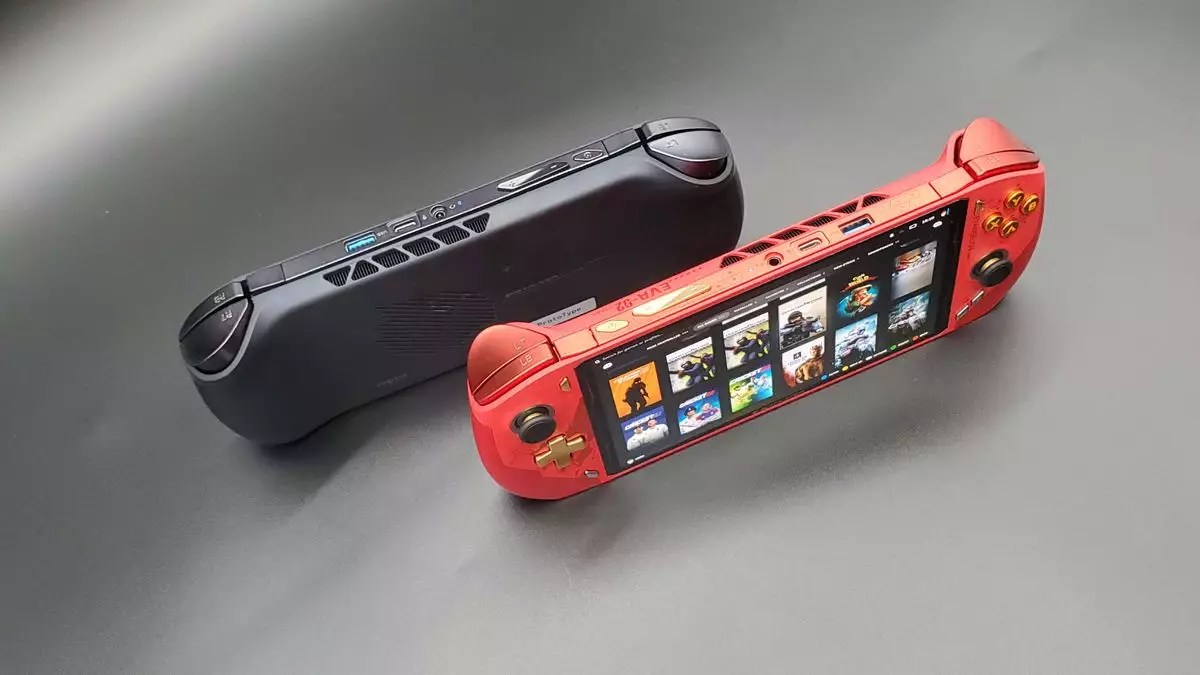As the gaming landscape rapidly evolves, so does the technology powering it. AMD is preparing to unveil the Ryzen AI Z2 Extreme APU, a significant advancement in their line of handheld gaming solutions. This new iteration of the Strix Point APU is designed specifically for handheld devices, incorporating a fully enabled Neural Processing Unit (NPU), aiming to redefine user experiences in mobile gaming and beyond. The blossoming field of artificial intelligence in gaming is akin to a double-edged sword: it offers unprecedented enhancements while simultaneously raising questions about practicality and efficiency.
Demystifying AMD’s Z2 Architecture
The introduction of APUs (Accelerated Processing Units) with specialized features for handheld gaming marks a pivotal moment for AMD. The ‘Z’ series, including the new Z2 Extreme model, is tailored for gaming-specific demands, yes—but not just any gaming. These chips bridge the gap between high-performance desktop experiences and the more intimate world of handheld devices, serving gaming enthusiasts who crave power on the go. The Z2 Extreme comes equipped with 16 RDNA 3.5 graphics cores and eight CPU cores, but this particular architecture is more intricate than it first appears.
Essentially, the Z2 Extreme leverages the same internal structural design—the silicon architecture—as existing models like the Ryzen AI 9 HX 375, albeit with the AI capabilities toggled on. Meanwhile, the other Z2 variants are drawn from entirely different generations of AMD’s architecture, compounding the potential for confusion among consumers. The Z2 Go, built on older Zen 3 cores, paints a picture of AMD’s evolution not just as a technological signature but also as an avenue for the company’s diverse product strategy in the disposable handheld device market.
AI-Driven Handhelds: Unpacking Real-World Implications
The most significant upgrade in the Ryzen AI Z2 Extreme is undoubtedly its NPU, which primes the device for a world where AI integration is increasingly seen as an asset. But here lies an essential query: Is the impending promise of AI capabilities compelling enough to justify its implementation in handheld gaming? While the NPU certainly allows for marketing leverage—positioning devices as “AI-capable”—the question remains whether it translates to meaningful gaming advancements or everyday applications.
AI-driven functionalities, such as Microsoft’s Copilot+ in Windows, could enhance user experience by simplifying tasks and enabling new interactions. Yet, this leap presupposes a compatible framework. Many popular AI services, like ChatGPT, operate on cloud bases, calling into question the immediate utility of maximizing on-device AI processing. This dichotomy highlights an essential friction in the forthcoming action: will users see a tangible difference in their gaming interactions, or will the disconnect between local processing and cloud capabilities dilute its effectiveness?
Battery Life: The Silent Concern Amidst Innovation
With the launch of the Ryzen AI Z2 Extreme, AMD appears to be on the brink of making handheld devices smarter and more interactive, but it is crucial also to recognize the potential risks, particularly concerning battery life. High-performance components housed within the compact bodies of handheld gaming devices have always posed challenges for battery efficiency. The introduction of an NPU raises alarms regarding the power consumption balance within these devices.
Activating the NPU alongside CPU and GPU may incite additional drain on power resources, leading to a probable compromise in the cherished aspect of “all-day battery life.” The reality is that gamers often look for prolonged play sessions without the shackles of chargers being necessary, especially when portability is a selling point. If the trade-off results in a significant drop in battery longevity, enthusiasm for these innovative features may be tempered.
AMD’s Ryzen AI Z2 Extreme could indeed be at the forefront of marrying handheld gaming and AI capabilities, presenting an intricate balance of power and practicality. The excitement is palpable, but careful consideration and real-world testing are paramount to ascertain the true value of AI enhancements in gaming handhelds. Will this newest endeavor lead to a revolution in player experience, or is it a step toward complicating an already intricate market in ways that could overshadow consumer benefits? As AMD charts its path, the narrative of the Ryzen AI Z2 Extreme remains a compelling saga of potential—one in which caution and enthusiasm must walk hand in hand.


Leave a Reply